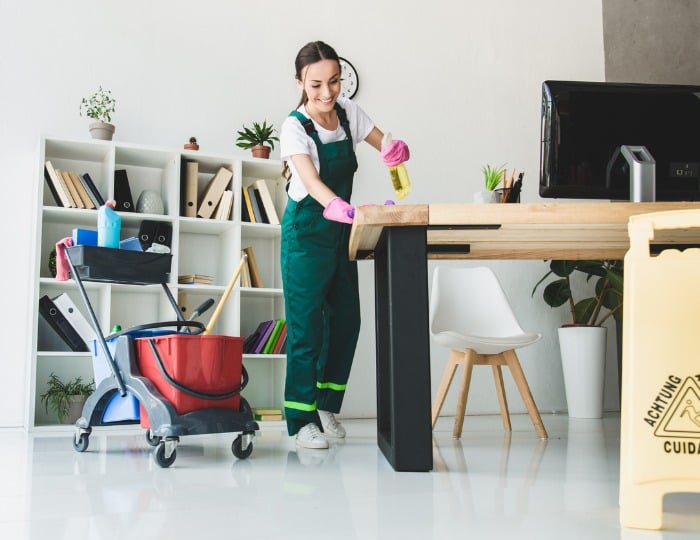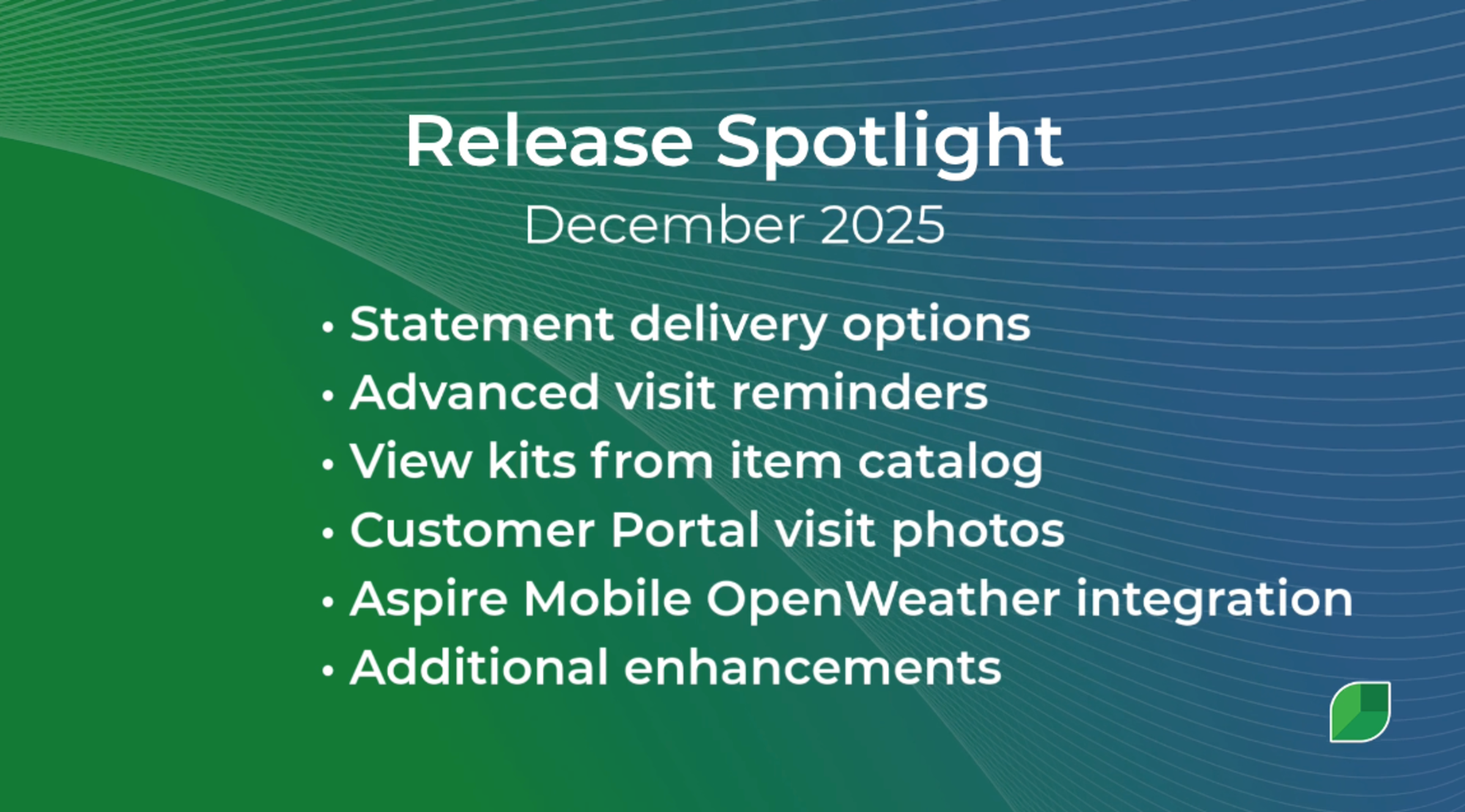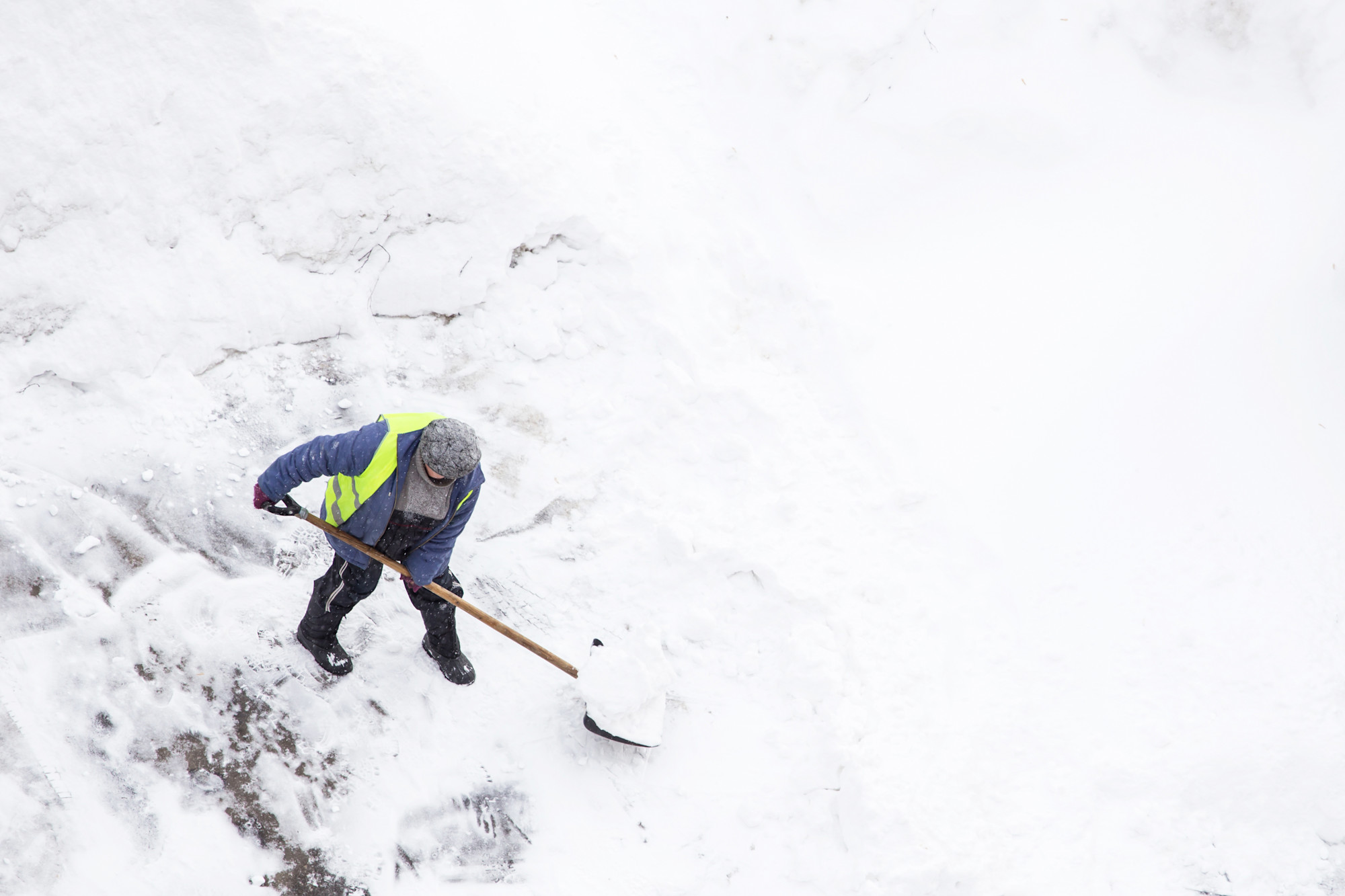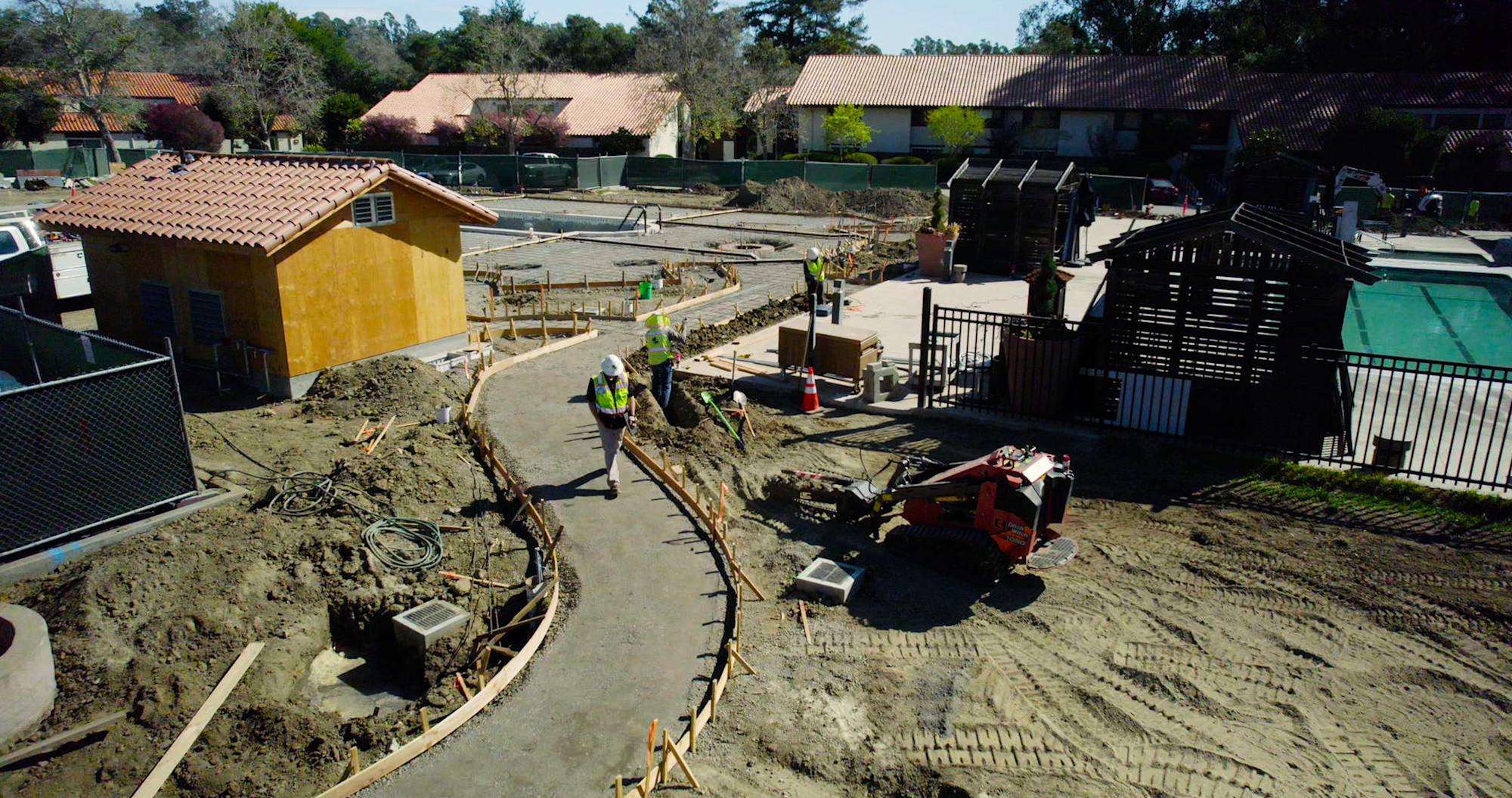Pricing commercial cleaning jobs takes skill. If you price too low, you’ll diminish your profits; if you price too high, you may lose customers.
Job rates depend on many factors, including:
Your geographical area
What it costs your company to deliver service
Ever-changing supply costs
Your company’s financial goals
With so many variables, it can take time to pinpoint your commercial cleaning costs.
Setting competitive and profitable service prices enables companies in the cleaning industry to attract and retain more customers to achieve greater business growth.
This guide outlines steps to calculate and price cleaning jobs, whether you’re developing a new pricing structure or re-examining existing rates.
Average commercial cleaning rates
Average commercial cleaning rates provide a baseline for cleaning service prices.
Keep in mind the cost of commercial cleaning varies widely based on:
Location
Facility type and size
Frequency of cleaning
Provided or included cleaning supplies
Specialized cleaning requests.
For a 2,000-square-foot office building, commercial cleaning prices range from $140-$300, for an average price of $220. One-time cleaning services typically cost more than regularly scheduled cleaning services.
Below, find commercial cleaning rates charts showing the average cost of cleaning services by service type, cleaning area size, and hourly.
By the type of commercial cleaning service
Commercial cleaning rates vary based on the type of cleaning service. The following chart shows the cleaning rate range for several cleaning services.
Service Type | Average Cleaning Rate |
|---|---|
Carpet cleaning | $0.20–$0.40 per sq. ft. |
Stripping and waxing | $0.30 – $0.50 per sq. ft. |
Tile and concrete floor cleaning | $0.12 – $0.21 per sq. ft. |
Stain and spot cleaning | $25-$40 per hour |
Office appliances | $10-$40 per appliance |
Source: HomeAdvisor
Basic janitorial services include:
Dusting
Disinfection
Vacuuming
Sweeping
Mopping
Trash removal
Specialty cleaning services include:
Floor buffing
Stripping and waxing
Carpet cleaning
Window cleaning
Since deep-cleaning or specialty services take more time, cleaning companies typically charge more for these services.
By the size of the cleaning area
The larger the area, the more cleaning services cost due to labor and supply costs. The following chart shows the average cleaning rate based on area size.
Area Size | Average Cleaning Rate |
|---|---|
0-1,000 sq. ft. | $120 |
1,000-2,000 sq. ft. | $200 |
2,000-3,000 sq. ft. | $290 |
3,000-4,000 sq. ft. | $370 |
4,000-5,000 sq. ft. | $460 |
5,000-6,000 sq. ft. | $540 |
6,000-7,000 sq. ft. | $630 |
7,000-8,000 sq. ft. | $700 |
8,000-9,000 sq. ft. | $800 |
9,000-10,000 sq. ft. | $880 |
Source: Thumbtack
Square footage provides a starting point for cleaning companies to determine how much to charge. A larger office with a break room and multiple restrooms would cost more to clean than a small office space.
By the hour
Cleaning companies may charge an hourly rate per cleaner for small or infrequently scheduled jobs. The following chart shows hourly average cleaning rates.
Hourly Rate Type | Average Cleaning Rate |
|---|---|
National average | $39/hour |
Low end | $25-$28/hour |
High end | $75-$90/hour |
Source: Thumbtack
Cleaning companies charging hourly rates provide a free quote to the customer for cleaning time estimates. The customer may be charged more or less depending on the actual time it takes to complete the job.
How are commercial cleaning rates calculated?
Calculating commercial cleaning rates is crucial to the profitability of jobs—and your business.
To accurately price jobs, commercial cleaning service providers should perform a walk-through to determine the scope of work and obtain accurate measurements.
→ In addition to accurate measurements, businesses need to implement a standardized estimating process for consistent estimates.
Cleaning companies should reexamine pricing regularly to account for material and supply inflation and rising labor costs and ensure the pricing structure supports business growth.
1. Find out the job details and break it down
Before calculating a cleaning service cost, perform a walk-through of the commercial building or office space to view the space and take measurements.
Considerations include:
Total square footage
Layout (stairs, hallways, and open spaces)
Number of rooms
Type of rooms (offices or restrooms)
Types of surfaces
Frequency of cleaning
Special customer requests or supply needs
Once you’ve recorded the job details, you’re ready to start calculating.
2. Calculate labor costs based on the job details
To calculate labor costs, estimate how long it takes to clean the building.
By estimating the time it takes one commercial cleaner to complete a specific task or clean a certain amount of square feet, you can evaluate the workload of a job site. From there, you can decide the number of team members you need to complete the job efficiently and profitably.
As an example, let’s say Quality Cleaning Company determines an office cleaning job will take two cleaners one hour to clean. The company pays its employees an hourly rate of $15/hour.
The initial labor cost calculation might look like:
2 employees x 1 hour x $15/hour = $30 labor cost
$30 x 2 hours = $60 labor cost
The company employs full-time cleaners, so it will need to factor in employee expenses, such as payroll taxes and workers’ compensation insurance. Typically, these expenses fall between 15-25% of employee wages.
$60 x 0.25 = $15 employee expenses
$60 + $15 = $75 total labor cost
Accurately calculating labor costs can be challenging because of these extra expenses. If you need advice or current tax data, consider contacting your CPA for further guidance.
3. Include material and overhead costs
Another factor in a job’s total cost includes adding material and overhead costs.
Material costs are direct costs and include the supplies and equipment you use on the job. Overhead costs are indirect costs and include the costs of operating your business, such as:
Administrative salaries
Mortgage payment or rent
Utilities
Vehicles
Property tax
Business insurance
Office equipment and supplies
For accurate numbers, add up your expenses during a specific time period, such as a month or a year. Then divide that number by your sales within the same time period.
Using the same example, Quality Cleaning Company’s monthly material and overhead expenses were $12,500, and the company made $50,000 in monthly sales. The calculation is as follows:
$12,500/$50,000= 0.25
0.25 x 100 = 25%
This means they need to include an additional 25% to cover material and overhead expenses.
4. Factor in your markup
Without a markup, your cleaning company won’t generate profit.
Many janitorial business owners aim to earn a net profit of 10-28% of gross sales, so adding a markup percentage to the cleaning job price is necessary.
For example, for a 25% markup, the calculation looks like this:
$75 labor + $15 material and overhead costs = $90 per hour
$90 x .25 markup = $22.50
$90 + $22.50 = $112.50 per hour total cost
It’s key to track cleaning job costs and profitability to ensure you price jobs accurately and achieve desired profit margins.
How to price a commercial cleaning job
Commercial cleaning companies use various pricing methods for cleaning jobs, depending on the company’s process. It’s important to choose the proper method to ensure profitability.
Hourly rate
An hourly rate charges a set price per hour. This may work well for small businesses, house cleaning, or clients who request infrequent service. The actual price of the service may vary based on how long the job takes your employees to complete.
Best for: Small and specialty cleaning jobs
Square footage rate
Cleaning businesses most often use a square footage rate for commercial spaces. Often, cleaning companies use a lower per-square-foot rate for larger office buildings, even though the actual job cost will be higher.
Best for: Commercial spaces, institutions, medical facilities, and other large buildings
Flat fee
A flat rate charges one fee for a cleaning service. Clients know the cost of the cleaning job upfront and won’t be charged extra if a job takes more time.
Conversely, cleaning companies can generate more profit if their employees work efficiently and finish the job sooner. It’s important to estimate the job accurately so your company doesn’t lose money by going over projected time.
Best for: One-time, deep cleaning, or other specialty cleaning services
Task-based pricing
Task-based pricing charges a specific amount based on the cleaning task. Arriving at a task-based price involves first calculating how long your employees take to complete each cleaning process.
Best for: Infrequent cleanings, special customer requests, or specialty cleaning services
Custom pricing
The most flexible option, custom pricing, enables cleaning companies to set the price for individual jobs. Most often, cleaning companies use custom pricing for cleaning contracts for recurring services or for cleaning bids. It’s important to remain competitive and profitable when creating custom pricing quotes.
Best for: Bids, contracts, large or complex cleaning jobs
Determine the right price with the right software tool
The right software gives commercial cleaning companies the tools to accurately estimate and price cleaning jobs. Instead of relying on manual methods or gut instinct.
→ Commercial cleaning business software streamlines estimating by using historical data to generate accurate costs and service prices.
Aspire commercial cleaning business software provides industry-specific management tools and automates key areas of the estimating process for accurate, consistent, and profitable prices.
Aspire’s estimating templates and kits combine cleaning company production factors with labor and material costs into a single line item on the estimate. This makes it fast for companies to create job bids while also ensuring accuracy, no matter who creates the estimates. Templates also include management-approved profit margins for maximum profitability.
Aspire automates job costing to track real-time labor, material, and supply costs, providing cloud-based historical performance data to drive accurate estimates and pricing for future jobs.
Increase your profitability with Aspire
An end-to-end software solution empowers commercial cleaning business owners to operate more profitably as they scale.
Aspire’s integrated functionality optimizes operational processes from estimating to invoicing. Commercial cleaning companies can understand their real-time costs to manage responsively, eliminate waste, and identify their high-profit services and contracts.
Get the insights you need to make better business decisions and drive your company forward.
Ready to grow your commercial cleaning business? Request a demo to see Aspire in action.







